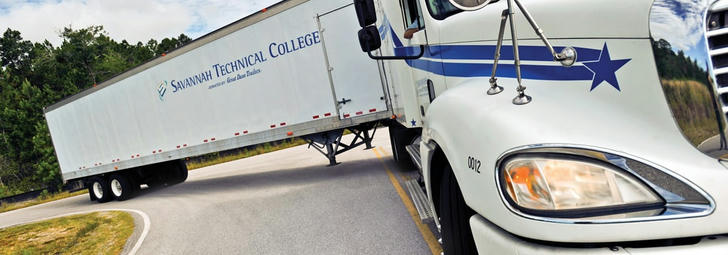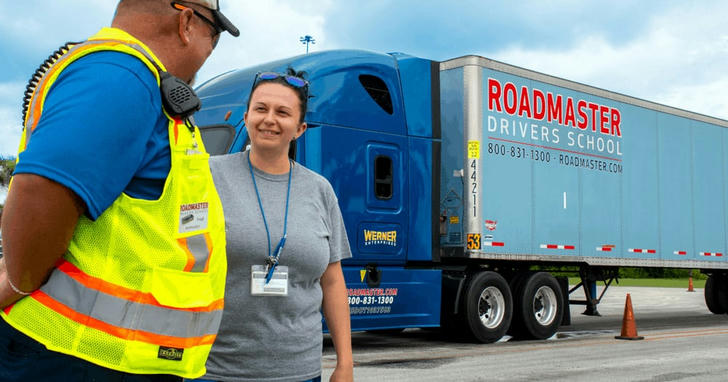Your Road to Freedom: A Comprehensive Guide to CDL Training in America
The American highway isn’t just a network of roads—it’s a lifeline. Every day, over 3.5 million truck drivers keep the economy moving, delivering everything from groceries to critical medical supplies. With the industry facing a shortage of 80,000 drivers and projected to grow by 4% annually through 2032, there’s never been a better time to earn your Commercial Driver’s License (CDL). But how do you navigate the maze of training programs, avoid pitfalls, and launch a career that offers freedom, stability, and adventure? Let’s break it down.

Why CDL Training? More Than Just a Job
Becoming a truck driver isn’t just about handling an 18-wheeler—it’s about embracing a lifestyle. Consider these compelling reasons to pursue a CDL:
High demand, higher pay: The median annual wage for heavy truck drivers exceeds $50,000, with experienced drivers earning over $70,000. Specialized roles (e.g., hazmat or oversized loads) can push earnings into six figures.
Flexibility: Choose local routes for daily home time or long-haul journeys to explore all 48 contiguous states.
Career longevity: Automation fears? Not here. The American Trucking Associations estimates 1.1 million new drivers will be needed by 2030 to meet freight demands.
But success starts with selecting the right training path.
Step 1: Choosing the Right CDL School
Not all programs are created equal. Let’s explore the three main types of CDL schools in the U.S.:
A. Vocational and Community Colleges
These institutions, like Sage Truck Driving Schools (part of the IEC network), offer federally compliant training across 14 states, blending classroom theory with hands-on practice. Pros include affordability and no obligation to work for specific companies post-graduation. However, vocational programs often take longer (8–12 weeks) and may lack direct job pipelines.
B. Private CDL Schools
Schools like A-1 Truck Driving School in New York prioritize speed and customization. Their programs, available in multiple languages (Spanish, Punjabi, Pashto), condense training into 3–4 weeks. Graduates benefit from job placement assistance, with partnerships spanning regional and national carriers.
C. Company-Sponsored Programs
Many major carriers (e.g., Swift or Schneider) offer tuition reimbursement or “earn while you learn” models. While these programs fast-track employment, they often lock you into contracts requiring 1–2 years of service.
Key Takeaway: Prioritize FMCSA-certified schools with strong job placement records. For example, IEC’s Sage Truck Driving Schools boast a 90% graduation-to-employment rate, thanks to partnerships with logistics giants.

Step 2: What to Expect in Training
CDL programs blend classroom learning, yard practice, and real-world driving. Here’s a snapshot:
A. Classroom Fundamentals
Regulations: Master the Federal Motor Carrier Safety Regulations (FMCSR), hours-of-service logs, and state-specific laws.
Safety protocols: Learn cargo securement, accident prevention, and hazardous materials handling (if pursuing endorsements).
Trip planning: Study fuel-efficient routing, weather navigation, and electronic logging devices (ELDs).
B. Hands-On Skills
Pre-trip inspections: Practice the 100+ point checklist for brakes, tires, and lighting systems.
Maneuvers: Perfect backing, parallel parking, and navigating tight spaces. At A-1 Truck Driving School, students train on real highways and rural roads to build confidence.
Road simulations: Some schools use virtual reality (VR) to simulate emergencies like brake failures or icy roads.
Pro Tip: Schools like Olympic Career Training Institute (OCTI) emphasize “soft skills” like workplace ethics and communication—traits employers value as much as technical ability.
Step 3: Tackling the CDL Exams
The final hurdle involves two tests:
A. Written Knowledge Test
Covering general trucking knowledge, air brakes, and endorsements (e.g., tanker or passenger vehicles), this exam requires thorough study. Use state-specific CDL manuals and apps like CDL Prep for practice.
B. Skills Test
Administered by the DMV, this three-part evaluation includes:
Pre-trip inspection: Verbally identify malfunctioning components.
Basic controls: Execute maneuvers like alley docking.
Road test: Demonstrate safe driving in traffic, merging, and hill starts.
Success Hack: Schools like A-1 offer mock exams to simulate test-day stress, increasing first-attempt pass rates.
Avoiding Common Mistakes
Even motivated students stumble. Here’s how to stay ahead:
Beware of scams: Verify school accreditation through the FMCSA’s Training Provider Registry. For example, IEC’s programs are recognized for their commitment to student success and social equity.
Physical readiness: Long hours demand stamina. Incorporate stretching and healthy eating into your routine.
Language barriers: Non-native English speakers should seek multilingual programs. A-1’s Punjabi and Spanish-language instructors bridge this gap effectively.
Financial planning: While private schools cost $3,000–$7,000, scholarships like IEC’s Be the Change program support underrepresented groups.
Real Success Stories
Meet trainees who turned CDLs into life-changing careers:
Maria, 34: A former retail worker, she enrolled at Sage Truck Driving School, attracted by their job placement network. Within a month of graduating, she secured a regional route with home weekends. “This isn’t just a job—it’s freedom,” she says.
Raj, 28: An immigrant from India, he leveraged A-1’s Punjabi-language training to ace his exams. Today, he hauls specialized machinery, earning 30% above the industry average.
Beyond the License: Building Your Career
Your CDL is a launchpad, not a finish line. To thrive long-term:
Specialize: Earn endorsements for tankers, doubles/triples, or hazardous materials. Each adds $5,000–$15,000 to your annual income.
Embrace tech: Learn telematics systems and electric truck operations to stay ahead of industry shifts.
Network: Join groups like the American Trucking Associations (ATA) for mentorship and advocacy.
Conclusion: Your Journey Begins Here
The road to a CDL is paved with challenges, but the rewards—financial stability, independence, and the pride of keeping America moving—are unparalleled. Whether you choose a community-focused program like IEC’s Sage Schools or a fast-track option like A-1, the keys to success remain the same: commitment, practice, and the right training partner.
As trucking legend Bill Mack sang, “There’s a little white line that’s a friend of mine…” That line awaits you. Start researching FMCSA-approved schools today—your future on the open road begins now.
